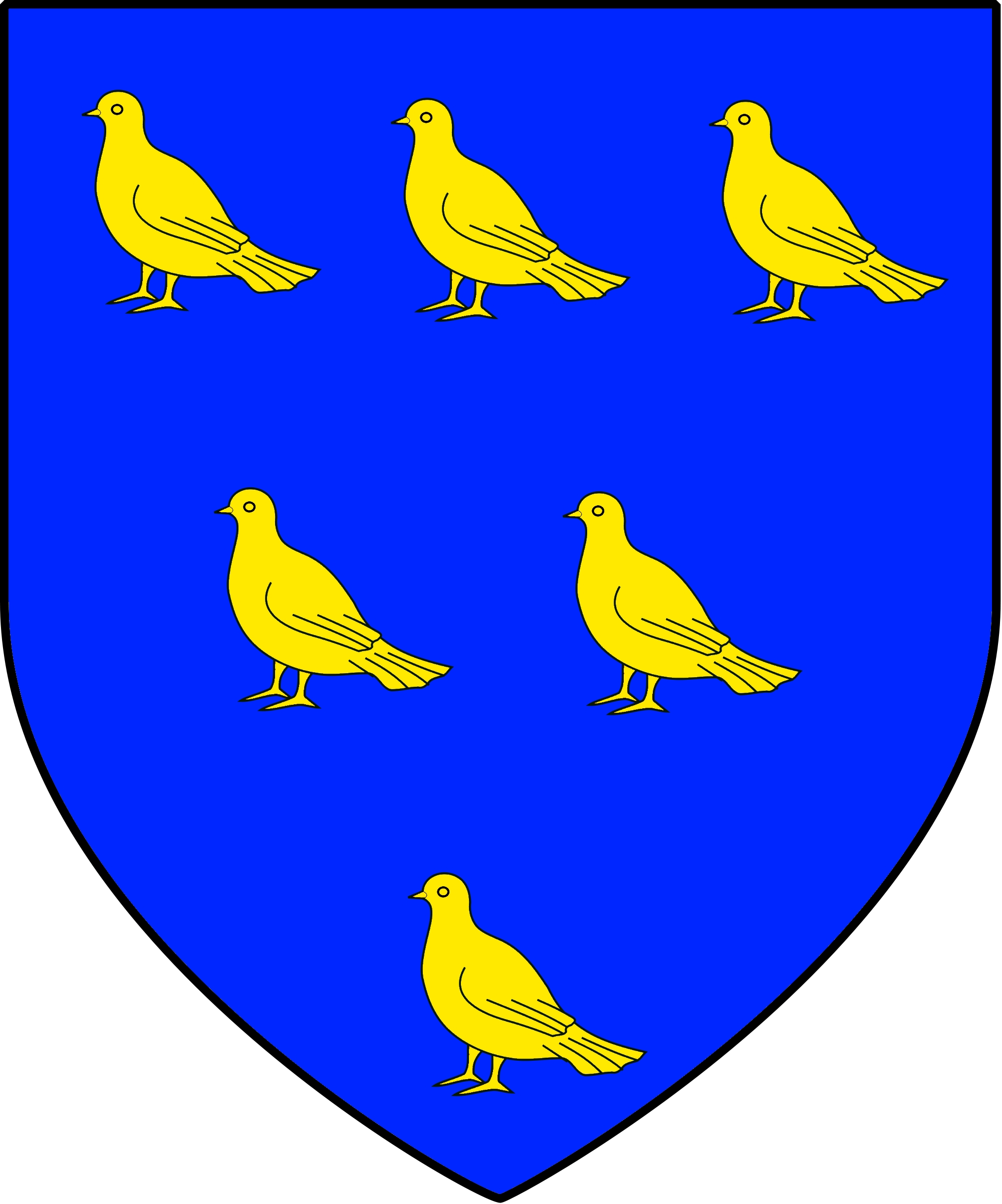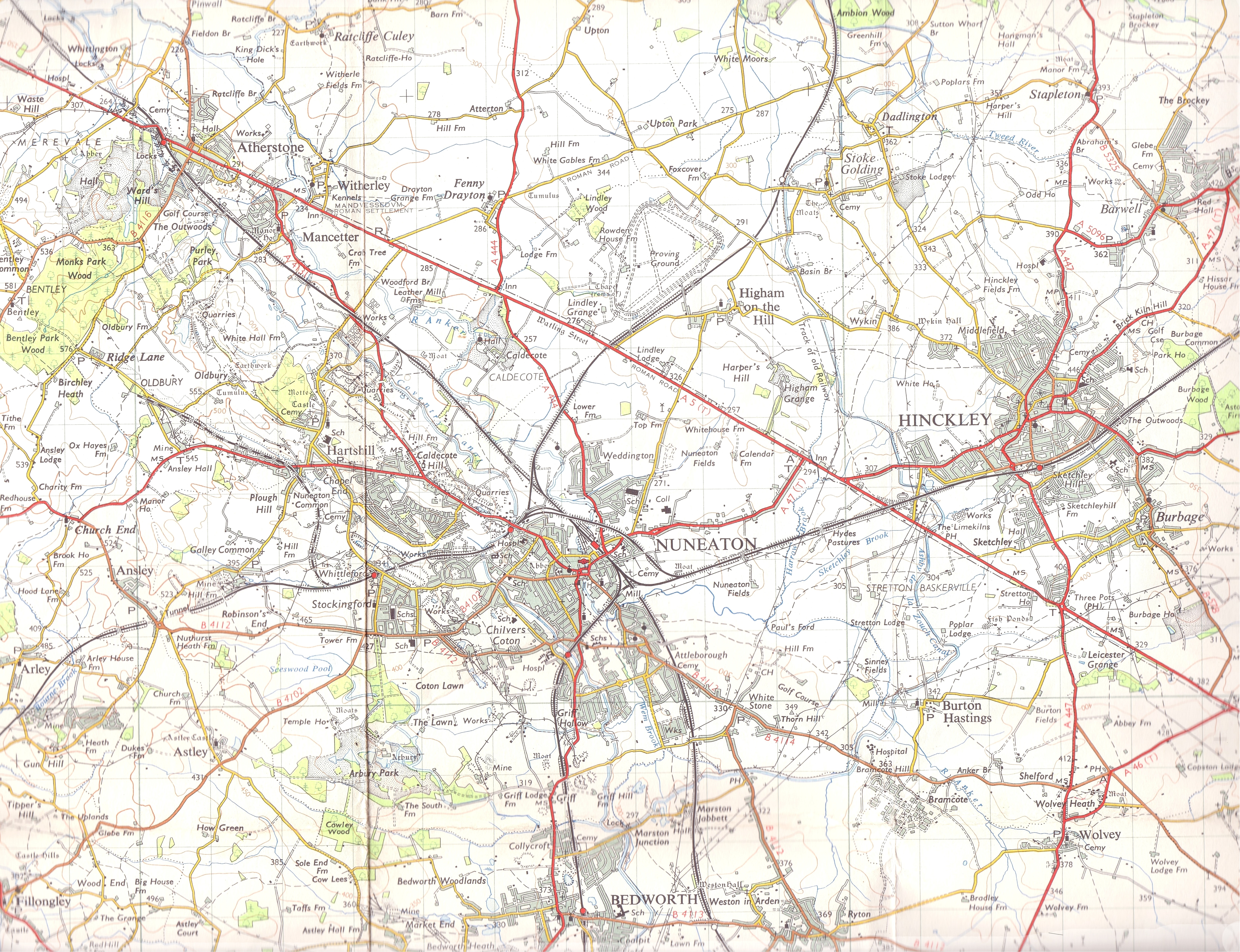|
Wolstan Dixie, 4th Baronet
Sir Wolstan Dixie, 4th Baronet (1700–1767) was among the most colourful of the 13 Dixie baronets of Market Bosworth, descended from the second Sir Wolstan Dixie, knighted by James I in 1604, and Sheriff of Leicester (himself grand-nephew of the first Sir Wolstan Dixie, Lord Mayor of London in 1585, during the reign of Elizabeth I). Biography The 4th Baronet was born at Bosworth Hall in 1700. The very rare but characteristic male given name Wolstan is a variant spelling of Wulstan, probably deriving from Wolstan the 11th-century bishop. Sir Wolstan was a colourful character and stories, real and possibly spurious abound. He was Sheriff of Leicestershire in 1727. He had a reputation for being a pugnacious bully, with a penchant for using his fists to settle any dispute, which often set him at odds with his neighbours and even ex-employees.J.L. Clifford, 1955, Young Samuel Johnson, p. 131 As the chief trustee of the local school he "had complete control" over the a ... [...More Info...] [...Related Items...] OR: [Wikipedia] [Google] [Baidu] |
Sir Wolstan Dixie (1700–1767)
Sir Wolstan Dixie (1524/1525 – 1594) was an English merchant and administrator, and Lord Mayor of London, Lord Mayor of the City of London, London in 1585. Life He was the son of Thomas Dixie and Anne Jephson, who lived at Catworth in Huntingdonshire. Wolstan was the fourth son of his father, and went into business. He appears to have been apprenticed to Sir Christopher Draper of the Ironmongers' Company, who was lord mayor in 1566, and whose daughter and coheiress, Agnes, he married. Sir Christopher was of Melton Mowbray in Leicestershire, and Dixie later held property in that county. He was a freeman of the Skinners' Company, was elected alderman of Broad Street ward 4 February 1573–4, and became one of the sheriffs of London in 1575, when his colleague was Edward Osborne. In 1585 he became lord mayor, and his installation was greeted by one of the earliest city pageants now extant, the words being composed by George Peele. On 8 February 1592 he became alderman of St. ... [...More Info...] [...Related Items...] OR: [Wikipedia] [Google] [Baidu] |
Bosworth Hall 1791
Bosworth may refer to: * Battle of Bosworth Field, a battle during the Wars of the Roses in 15th century England Places United Kingdom * Husbands Bosworth, a village in South Leicestershire ** RAF Husbands Bosworth, a World War II aerodrome near Husbands Bosworth * Market Bosworth, a town near the site of the Battle of Bosworth in south-western Leicestershire * Bosworth (UK Parliament constituency), in south-western Leicestershire * Hinckley and Bosworth, a local government district in south-western Leicestershire, originally named Bosworth North America * Bosworth, Missouri, a city in Carroll County, Missouri, United States * Lake Bosworth, Washington, in Snohomish County, Washington, United States * Mount Bosworth, on the border of Alberta and British Columbia, Canada People * Bosworth (surname), a surname and a list of people with the name * Baron Bosworth, former title for the Duke of Berwick Given name * Frank Bosworth Brandegee (1864–1924), United States Representati ... [...More Info...] [...Related Items...] OR: [Wikipedia] [Google] [Baidu] |
1767 Deaths
Events January–March * January 1 – The first annual volume of ''The Nautical Almanac and Astronomical Ephemeris'', produced by British Astronomer Royal Nevil Maskelyne at the Royal Observatory, Greenwich, gives navigators the means to find longitude at sea, using tables of lunar distance. * January 9 – William Tryon, governor of the Royal Colony of North Carolina, signs a contract with architect John Hawks to build Tryon Palace, a lavish Georgian style governor's mansion on the New Bern waterfront. * February 16 – On orders from head of state Pasquale Paoli of the newly independent Republic of Corsica, a contingent of about 200 Corsican soldiers begins an invasion of the small island of Capraia off of the coast of northern Italy and territory of the Republic of Genoa. By May 31, the island is conquered as its defenders surrender.George Renwick, ''Romantic Corsica: Wanderings in Napoleon's Isle'' (Charles Scribner's Sons, 1910) p230 * February 19 ... [...More Info...] [...Related Items...] OR: [Wikipedia] [Google] [Baidu] |
1700 Births
As of March 1 (Old Style, O.S. February 19), where the Julian calendar acknowledged a leap day and the Gregorian calendar did not, the Julian calendar fell one day further behind, bringing the difference to 11 days until February 28 (Old Style, O.S. February 17), 1800. In Sweden, the year started in the Julian calendar and remained so until February 28. Then, by skipping the leap day, the Swedish calendar was introduced, letting Wednesday, February 28, be followed by Thursday, March 1, giving the entire year the same pattern as a common year starting on Monday, similar to the calendars of 2001, 2007, and 2018. This calendar, being ten days behind the Gregorian and one day ahead of the Julian, lasts until 1712. Events January–March * January 1 – Protestantism, Protestant nations in Western Europe, except Kingdom of England, England, start using the Gregorian calendar. Catholic Church, Catholic nations have been using the Gregorian calendar since its introduction in ... [...More Info...] [...Related Items...] OR: [Wikipedia] [Google] [Baidu] |
Sir Wolstan Dixie, 5th Baronet
''Sir'' is a formal honorific address in English for men, derived from Sire in the High Middle Ages. Both are derived from the old French "" (Lord), brought to England by the French-speaking Normans, and which now exist in French only as part of "", with the equivalent "My Lord" in English. Traditionally, as governed by law and custom, Sir is used for men who are knights and belong to certain orders of chivalry, as well as later applied to baronets and other offices. As the female equivalent for knighthood is damehood, the ''suo jure'' female equivalent term is typically Dame. The wife of a knight or baronet tends to be addressed as Lady, although a few exceptions and interchanges of these uses exist. Additionally, since the late modern period, Sir has been used as a respectful way to address a man of superior social status or military rank. Equivalent terms of address for women are Madam (shortened to Ma'am), in addition to social honorifics such as Mrs, Ms, or Miss. Etymo ... [...More Info...] [...Related Items...] OR: [Wikipedia] [Google] [Baidu] |
Commonwealth Of England
The Commonwealth of England was the political structure during the period from 1649 to 1660 when Kingdom of England, England and Wales, later along with Kingdom of Ireland, Ireland and Kingdom of Scotland, Scotland, were governed as a republic after the end of the Second English Civil War and the High Court of Justice for the trial of Charles I, trial and execution of Charles I. The republic's existence was declared through "An Act declaring England to be a Commonwealth", adopted by the Rump Parliament on 19 May 1649. Power in the early Commonwealth was vested primarily in the Parliament and a English Council of State, Council of State. During the period, fighting continued, particularly in Ireland and Scotland, between the parliamentary forces and those opposed to them, in the Cromwellian conquest of Ireland and the Anglo-Scottish war of 1650–1652. In 1653, after dissolution of the Rump Parliament, the Army Council (1647), Army Council adopted the Instrument of Gover ... [...More Info...] [...Related Items...] OR: [Wikipedia] [Google] [Baidu] |
English Civil War
The English Civil War or Great Rebellion was a series of civil wars and political machinations between Cavaliers, Royalists and Roundhead, Parliamentarians in the Kingdom of England from 1642 to 1651. Part of the wider 1639 to 1653 Wars of the Three Kingdoms, the struggle consisted of the First English Civil War and the Second English Civil War. The Anglo-Scottish war (1650–1652), Anglo-Scottish War of 1650 to 1652 is sometimes referred to as the ''Third English Civil War.'' While the conflicts in the three kingdoms of England, Kingdom of Scotland, Scotland and Kingdom of Ireland, Ireland had similarities, each had their own specific issues and objectives. The First English Civil War was fought primarily over the correct balance of power between Parliament of England, Parliament and Charles I of England, Charles I. It ended in June 1646 with Royalist defeat and the king in custody. However, victory exposed Parliamentarian divisions over the nature of the political settlemen ... [...More Info...] [...Related Items...] OR: [Wikipedia] [Google] [Baidu] |
Royalists
A royalist supports a particular monarch as head of state for a particular kingdom, or of a particular dynastic claim. In the abstract, this position is royalism. It is distinct from monarchism, which advocates a monarchical system of government, but not necessarily a particular monarch. Most often, the term royalist is applied to a supporter of a current regime or one that has been recently overthrown to form a republic. In the United Kingdom, the term is currently almost indistinguishable from "monarchist", as there are no significant rival claimants to the throne. Conversely, in 19th-century France, a royalist might be either a Legitimist, Bonapartist, or an Orléanist, all being monarchists. United Kingdom * The Wars of the Roses were fought between the Yorkists and the Lancastrians * During the English Civil War the Royalists or Cavaliers supported King Charles I and, in the aftermath, his son King Charles II * Following the Glorious Revolution, the Jacobites su ... [...More Info...] [...Related Items...] OR: [Wikipedia] [Google] [Baidu] |
Roundhead
Roundheads were the supporters of the Parliament of England during the English Civil War (1642–1651). Also known as Parliamentarians, they fought against King Charles I of England and his supporters, known as the Cavaliers or Royalists, who claimed rule by absolute monarchy and the principle of the divine right of kings. The goal of the Roundheads was to give to Parliament the supreme control over executive branch, executive administration of England. Beliefs Most Roundheads sought constitutional monarchy in place of the absolute monarchy sought by Charles; however, at the end of the English Civil War in 1649, public antipathy towards the king was high enough to allow republican leaders such as Oliver Cromwell to abolish the monarchy completely and establish the Commonwealth of England. The Roundhead commander-in-chief of the first Civil War, Thomas Fairfax, remained a supporter of constitutional monarchy, as did many other Roundhead leaders such as Edward Montagu, 2nd Earl ... [...More Info...] [...Related Items...] OR: [Wikipedia] [Google] [Baidu] |
Puritan
The Puritans were English Protestants in the 16th and 17th centuries who sought to rid the Church of England of what they considered to be Roman Catholic practices, maintaining that the Church of England had not been fully reformed and should become more Protestant. Puritanism played a significant role in English and early American history, especially in the Protectorate in Great Britain, and the earlier settlement of New England. Puritans were dissatisfied with the limited extent of the English Reformation and with the Church of England's religious toleration of certain practices associated with the Catholic Church. They formed and identified with various religious groups advocating greater purity of worship and doctrine, as well as personal and corporate piety. Puritans adopted a covenant theology, and in that sense they were Calvinists (as were many of their earlier opponents). In church polity, Puritans were divided between supporters of episcopal, presbyterian, and ... [...More Info...] [...Related Items...] OR: [Wikipedia] [Google] [Baidu] |
Appleby Magna
Appleby Magna is a village and civil parish in the North West Leicestershire district, in the county of Leicestershire, England. It includes the small hamlets of Appleby Parva and Little Wigston. Location The parish has a total collective population of 1,084 (2011) spread across 500 properties (2020), with Appleby Magna its largest settlement. Historically, Appleby was one of the largest and wealthiest parishes in Leicestershire, which was reflected by its large church. However, the village and its population have remained fairly small by restricting large-scale development. The village lies on the edge of the ancient boundary between the kingdom of Mercia and the Danelaw. The land itself has been inhabited from the early Neolithic period. The village developed in the pre-Saxon era. The name Appleby is derived from aeppel (apple) and by(r) (settlement). The village sits on the outskirts of the National Forest, England, National Forest and is bordered by the Gopsall, Gopsal ... [...More Info...] [...Related Items...] OR: [Wikipedia] [Google] [Baidu] |
Hinckley, Leicestershire
Hinckley is a market town in south-west Leicestershire, England, administered by Hinckley and Bosworth Borough Council. Hinckley is the third largest settlement in Leicestershire, after Leicester and Loughborough, and is about halfway between Leicester and Coventry, close to Nuneaton and Watling Street, on the border with Warwickshire. The town is part of an urban area with the village of Burbage to the south. History In 2000, archaeologists from Northampton Archaeology discovered evidence of Iron Age and Romano-British settlement on land near Coventry Road and Watling Street. Hinckley has a recorded history going back to Anglo-Saxon times; the name Hinckley is Anglo-Saxon: "Hinck" is a personal name and "ley" is a clearing in a wood. By the time of the Domesday Book in 1086, Hinckley was quite a large village, and it grew over the following 200 years into a small market town—a market was first recorded there in 1311. There is evidence of an Anglo-Saxon church – the re ... [...More Info...] [...Related Items...] OR: [Wikipedia] [Google] [Baidu] |









